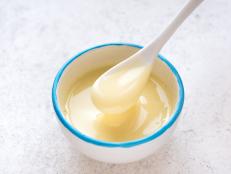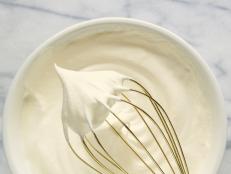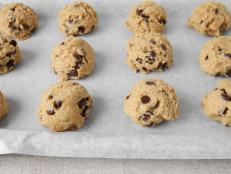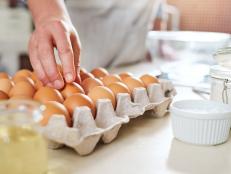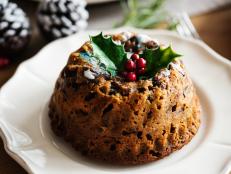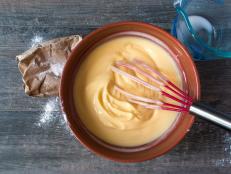What Is Yeast?
And what is yeast used for?

HandmadePictures/Getty Images
By Jessie Sheehan for Food Network Kitchen
Jessie Sheehan is a baker and cookbook author.
Yeast is one of the tiniest and most powerful tools cooks, brewers and winemakers share. It's a living organism, and it can be used to make everything from donuts to pizza dough to a cold glass of beer. But what is yeast, exactly? Read on to learn everything you’ve ever wanted to know about everyone’s favorite, very small, very alive, and VERY important, sugar-eating ingredient.
What Is Yeast?
Yeast is a single-celled living organism that transforms sugar and starch into carbon dioxide and alcohol through fermentation.
Yeast is essential to baking bread and making beer and wine. Carbon dioxide causes breads to rise (hi, fluffy cinnamon rolls) and alcohol - well, that’s pretty self-explanatory (hello, cold glass of rose on a summer night). Yeast’s scientific name is Saccharomyces Cerevisiae, which quite literally means “sugar-eating fungus.”

alvarez/Getty Images
How Is Yeast Made?
Yeast is manufactured commercially by combining cultivated pure yeast cells with molasses. Because yeast is a “living organism,” making it is not a chemical procedure. Instead, yeast quite literally needs to be grown to be manufactured. Yeast also exists in the natural world and the fermentation process (i.e.: the process whereby yeast is converted into carbon dioxide and alcohol) can happen, for instance when a ripe piece of fruit falls from a branch, splitting open and exposing its sugar-filled flesh. Yeast in the air feed off the fruit’s innards and fermentation occurs. The yeast necessary to leaven a loaf of bread can also be made in one’s very own kitchen (a.k.a a sourdough starter). When water and flour are combined in a warm kitchen, the natural yeast in the air feed off of the flour in the starter, creating the carbon dioxide that will eventually make your boule gloriously round and tall.
What Is Yeast Used For?
Yeast is used for leavening our baked goods – such as cinnamon buns, loaves of bread, doughnuts – basically all the best things ever, in our opinion. It is also used in the beer and wine making processes, to carbonate the beer and to provide the alcohol content of both. It also flavors the grapes in the wine, for instance, changing them from the sweet/tart fruit you picked off from a bunch in the crisper drawer of your fridge, and popped in your mouth, to something more complex and “adult.”
What Is Yeast in Food?
Foods (and drinks!) that contain yeast include bread and beer and wine. Cereals and candies often contain malt, a germinated grain, that is made with yeast. Kombucha, soy sauce, and miso are also yeast-based. Yeast contributes differently to different foods, whether it be by carbonating them, flavoring them or helping them rise.
What Is Baking Yeast?
Yeast not only helps baked goods rise, but also it adds flavor. When yeast reacts with the sugar and flour in a bread recipe, for instance, a fermentation process begins, resulting in the release of carbon dioxide and alcohol. The bread dough traps the gas, and due to its elasticity, expands. The alcohol that the yeast creates, on the other hand, adds flavor to the bread. Baking yeast comes in two forms: fresh yeast and dry yeast. Fresh is sold in the refrigerated section of grocery stores in the form of little cakes and has a relatively short shelf life. Dry is usually sold in packets and lasts longer, but it activates more slowly than fresh and stays active for a shorter period of time.

Lucy Lambriex/Getty Images
What Is the Difference Between Active Dry Yeast and Instant Yeast?
Active dry yeast has larger particles than instant yeast. Because of its size, active dry yeast needs to be dissolved in a little warm water, to proof it, before using. Instant yeast, on the other hand, because it is so fine, needs no special proofing and can be whisked in with the recipe’s other dry ingredients. But ultimately, the two are interchangeable and you may use one for the other in a pinch – just remember you do not need to proof instant in warm water before using.
How Much Yeast Is in a Packet?
A packet of active dry yeast (instant does not typically come in packets) contains 2 1/4 teaspoons, about 1/4 ounce of yeast.
What are Substitutes for Yeast?
Although there is no one for one, perfect substitute for yeast, in a pinch here are some substitutions.
Baking soda and an acid like lemon juice or vinegar. When you combine baking soda and an acid, like lemon juice or vinegar, it forms carbon dioxide, which is the same gas that yeast produces. To do so, use equal parts baking soda and acid to equal the amount of yeast called for in the recipe (if the recipe calls for two teaspoons yeast, use 1 teaspoon of soda and 1 of acid).
Sourdough starter. You can make your own yeast via a sourdough starter. 1 cup of starter is equivalent to one packet of active yeast or 2 1/4 teaspoons instant.
Double-acting baking powder. You can also use an equal amount of double acting baking powder in place of yeast. Because it is double acting, it releases carbon dioxide twice, once when it is first added to the liquid in your recipe, and once when it is baked.
Recipes with Yeast
Want to watch yeast in action? Check out some of the different recipes for which it is called.
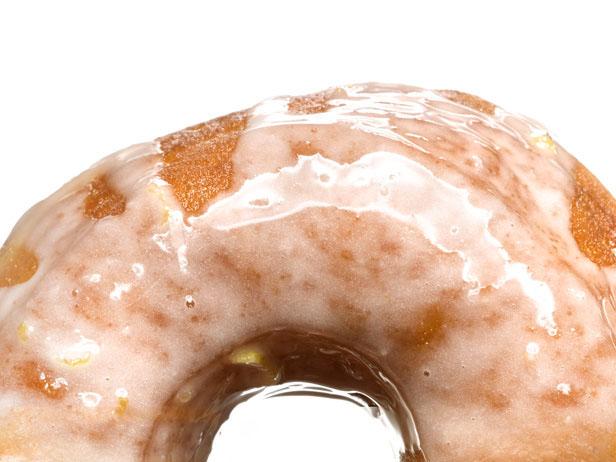
A yeasted donut, light and airy and – yes – yeasty, is just about the tastiest way we know to bake with yeast. These donuts get their rise from a packet of active dry yeast. The yeast requires time to work its magic, so you will need to let the dough rise for one and a half to two hours total, but once you take a bite of one of these warm donuts dipped in a simple vanilla glaze, you’ll realize it was all worth it – and then some.

Con Poulos, 2010, Con Poulos Photography
Making pizza at home is one of life’s great pleasures – yes, eating it in a pizza parlor is also nice, but if you have the time and inclination, there really is something special about doing it in your own kitchen. And here’s an easy recipe to get you started. The recipe calls for a packet of active dry yeast and only requires a single 90-minute rest. Moreover, the dough is assembled in a single bowl – no need to pull out any heavy equipment (stand mixer, we’re looking at you) and that makes everyone happy – even those who think they prefer their pizza in a parlor.

Yes, making pretzels at home is a project, but it is the most fun, rewarding, creative (what shape will you form your pretzel into?) and delicious project we know. The dough here calls for one packet of active dry yeast and only one hour of resting time. The solution you dip your pretzels in (yes, pretzels get dipped before baking – usually in lye) is made from baking soda and warm water, and the pretzels only bake for 10 to 12 minutes. Oh, and the sweet mustard sauce you then get to dip your pretzels in before consuming? The stuff of pretzel dreams . . .
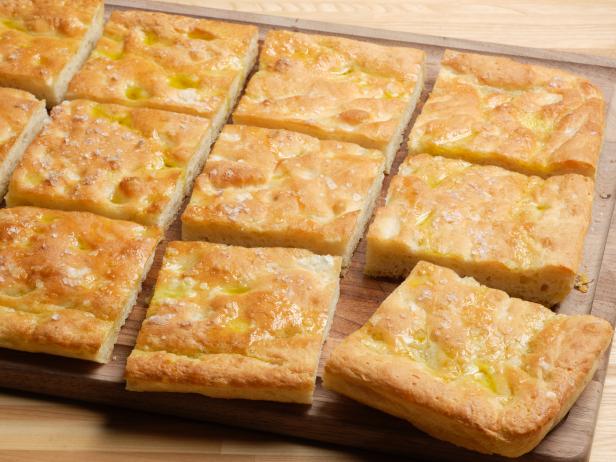
Caitlin Ochs
Focaccia is not only a gift to every sandwich lucky enough to include it, but it is also one of the easiest breads we know to whip up and serve as part of a pre-meal spread or in a breadbasket accompanying an Italian feast. The recipe here requires almost 3 hours of resting and a single packet of yeast, but all that time is inactive, so you can read a book, workout or get the rest of the meal ready, while the yeast does all the work for you. Before its second rise, a mixture of salt and water is drizzled over the bread, giving it a deeper, more complex flavor.

Renee Comet
These other-worldly rolls are made from a packet of yeast and an enriched dough – of milk and eggs and plenty of butter (there’s butter in the rolls, as well as some brushed on top pre- and post-bake). They do require a stand mixer, but it’s unlikely you’ll mind, as the machine makes quick work of the dough, kneading it into a plush ball of elasticity. There are two rests, totaling about an hour and a half to two hours. Any dinner party that these cuties turn up at, is a dinner party we want an invitation to (just saying).
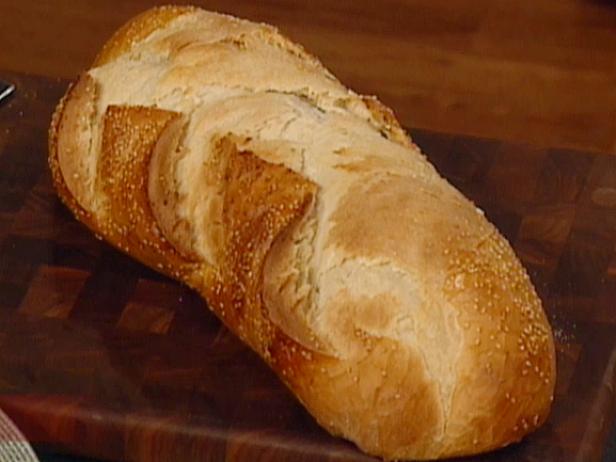
Basic Italian Bread
Our foolproof recipe makes it easy to shape and season this go-to sandwich staple at home. While it's delicious piled high with cheeses and sliced salumi, we also enjoy it dipped in salted olive oil or slathered with butter.
Related Links:
























